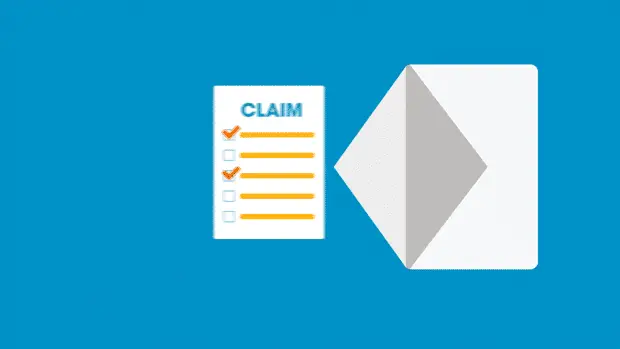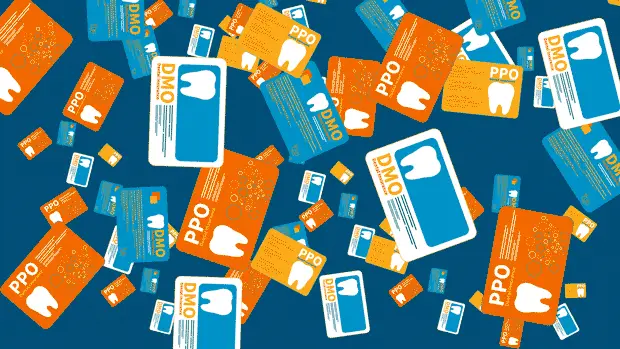
Most dental insurance plans renew at the end of each calendar year. Unlike medical insurance that binds you to a minimum out-of-pocket cost, dental plans offer an annual maximum benefit, which is a limit to your insurance benefits. On average, this benefit is typically between $1000 – $3000 per year, and usually does not roll over to the following year.
Most dental insurance plans renew at the end of each calendar year. Unlike medical insurance that binds you to a minimum out-of-pocket cost, dental plans offer an annual maximum benefit, which is the limit to your insurance benefits. On average, this benefit is typically between $1000 – $3000 per year, and usually does not roll over to the following year (so with December 31st drawing near, we want to remind you to take advantage of any remaining annual benefits before they expire).
In order to choose what’s best for you and your family, it’s important to first understand how dental insurance works. While there are a variety of options (and of course the option to not carry dental insurance), we’ll begin by explaining the two main types of dental policies, which can be purchased privately or through an employer.
Dental Maintenance Organizations (DMO)
DMO plans are very similar to Health Maintenance Organization (HMO) plans for health insurance. These plans connect you with a network of providers for discounted rates, but guarantee benefits only if you see one of their contracted dentists. While these policies may be more affordable than a similar PPO plan, they greatly limit your freedoms in choosing a primary care dentist or needed specialist from their restricted network.
Preferred Provider Organizations (PPO)
Similar to DMOs, most PPOs have a network of contracted providers, however, you as the patient have the power to choose which dentist you want to see. PPO plans grant you the freedom to visit any dentist and often don’t require a referral when needing to see a specialist, whether that provider has an “in-network” or “out-of-network” relationship with your PPO plan.
Dental insurance plans provide a list of contracted providers they suggest their patients visit. A common myth regarding dental insurance is that you must always choose a provider from your policy’s list of network dentists. Although the insurance carriers sometimes use misleading language to support this myth, this is simply untrue. It’s important to understand that these common terms can have very different meanings when used in reference to dental insurance versus when used regarding the medical industry. In general, dental care does not have the same pricing dynamics as medical care, so you are unlikely to see the same level of price disparity between “in-network” and “out-of-network” in dental.
There are advantages and disadvantages in each option:

Advantages:
Disadvantages:
Advantages:

Disadvantages:
Regardless of the type of plan, you’ll want to consider an insurer that offers a variety of services without excessive clauses or restrictions. When reviewing or comparing policies, there are first some common terms to be aware of:
Annual Maximum Benefit: The total dollar amount a plan will pay for dental care in the term of your benefit period (typically a calendar year). Once this maximum is reached, all remaining dental services will be paid completely by you until your term renews.
Copayment (Copay) vs Coinsurance: A required payment due to your dentist at the time of services. This is usually a fixed amount (copay) or percentage (coinsurance) decided by your insurance carrier. This cost is typically paid at every dental visit, but the amount owed may vary based on your scheduled treatment.
Covered Services: A dental treatment for which payment is provided under your dental plan.
Deductible: This one-time fee is the amount owed for certain services that must be paid annually before your insurance benefits will be paid to your dentist.
Explanation of Benefits or EOB: A document provided by your insurance carrier detailing the treatment paid on your behalf to your dentist. This is not a bill, but rather a statement of the specific treatments and amounts your insurance company has decided to cover under the terms of your plan. Watch your EOB after each dental visit to be sure you’re taking advantage of your maximum allowed benefit before it’s too late! On average, only 5% of those enrolled in a PPO plan actually use their full benefit allowance.
Frequency Limitations: A restriction set by your insurance carrier for the maximum number of services paid in a certain period of time. For example, no more than two cleanings every 12 months or one panoramic x-ray every three years are common limitations.
In-Network Provider: A dentist who has agreed to participate in your insurance provider’s network, accepting the rates set by your insurance company in exchange for priority access to the pool of patients your insurance company serves.
Non-Covered Services or Exclusions: A dental treatment for which payment is *not* provided according to the terms of your dental policy. This typically includes cosmetic dentistry, like tooth whitening or veneers. Many patients believe these services are “not allowed” or restricted, however it simply means your insurance benefits will not apply. Rest assured, your insurance company cannot decide what treatment is “allowed.”
Out-of-Network Provider: A dentist who has not signed up to participate in your insurance provider’s network. If you have a PPO plan, you can still choose an out-of-network provider. Your copay and premiums may be slightly higher, but nearly all out-of-network providers will work with your insurance and submit claims on your behalf. It is always a good idea to review your out-of-pocket costs before undergoing treatment, whether a provider is contracted or not.
Pre-Existing Conditions: Similar to health plans, dental policies may not cover treatment of conditions diagnosed before you enrolled. While some minor fillings may still be covered, replacement of missing teeth may require you to wait until the end of a waiting period or pay completely out-of-pocket. This may also be known as a “missing tooth clause.”
Premiums: The monthly or annual cost paid by you to enroll in a dental insurance plan.
Waiting Period: A period of time before you are eligible for certain dental treatments. This is less common in employer-sponsored plans than with individual plans. Time periods may also vary based on the complexity and cost of necessary treatment.
Once you understand the terms and conditions, take caution to choose a policy that will offer the most advantages for your family. While dental insurance isn’t a necessity for many, enrolling in a plan that fits your needs can offer some great benefits.
Routine Exams
Bi-annual dental exams consist of much more than just a cleaning. A comprehensive preventative visit includes a thorough and professional removal of plaque and tartar on every surface of every tooth. Plaque and tartar are likely to accumulate in areas that are hard to reach with a toothbrush alone. Your hygienist can also advise you on tips for better brushing and flossing techniques, unique to you. Then, you’ll have a check for cavities and gum disease, an oral cancer screening, and a detailed evaluation of your dental x-rays to assess your teeth, gums, jaw, and all supporting structures. These preventative appointments are crucial to your oral health and the longevity of your smile. Studies have shown that those with dental benefits are more likely to visit the dentist regularly for these routine exams and are less likely to need extensive dental treatment like extractions or root canals.
Your oral health is intricately linked to your overall wellness in a phenomenon called the Oral-Systemic Connection. Learn more about the importance of maintaining your oral health to protect yourself from disease in all areas of your body.
Lower Out-of-Pocket Costs (In-Network or Out-of-Network)
The greatest financial advantage of dental insurance is the feeling of savings. Due to the premiums being automatically deducted from your paycheck every two weeks, you’ll feel like you’re saving money because you pay little to no out-of-pocket at each visit to the dentist. While the savings in actual dollars may be minimal, there’s a benefit in being able to pre-pay and budget the expenses for your family.
Many who have employer-provided insurance believe they must choose an in-network dentist to reap any benefits of their dental insurance. While this is true of DMO plans, for those with PPO plans, this isn’t true at all. Almost all dental practices will file claims for treatment under any PPO plan, regardless of if the provider is in or out of network with your insurance company.
Peace of Mind
When able to budget and pre-pay for health expenses, the likelihood of last-minute cancellations or putting off necessary treatment due to cost decreases. Many people appreciate this comfort and are thus more consistent in their routine cleanings. As an added benefit, patients who have regular preventative visits are less prone to needing extensive (and expensive) dental treatment like extractions or root canals.

In-House Wellness or Savings Plans
Most dentists recognize the benefits of dental insurance to patient retention and patient compliance with recommended preventative care. As a result, many practices have developed their own in-house plans designed to offer an alternative to a traditional dental policy. Though the terms will vary by office, many of these plans will accept an annual enrollment fee in exchange of discounted treatment costs, much like dental insurance, but without all the hidden fees and restrictions.
Paying Out-of-Pocket
Though the security of dental insurance can be comforting to some, many have found a great sense of freedom and cost advantage to simply paying out-of-pocket. Being tied to an insurance plan can make you feel limited in the provider you prefer and treatment you need. Also remember, paying out-of-pocket for dental visits is much safer than it is when compared to seeking service in the medical field. It’s easy to confirm an estimate with your dentist before your appointment to avoid surprise bills later. If you maintain regular exams and preventative treatments there will be little concern for a large procedure you won’t have time to budget for.
Regular dental treatment is a universal necessity for good oral and overall health. Although it can be tempting to find unconventional ways to save money, one thing you never want to skimp on is quality care.
First, find a practice that makes your family feel safe, comfortable, and professionally treated. Insurance or no insurance, patients who have found a dentist they trust are far more likely to go regularly. If you have been visiting the same dentist for a significant time or have recently found a dental team you love, ask what insurance companies they work with to see if your employer sponsors a PPO plan that you like. If not, ask your dentist if they happen to have an in-house wellness plan option that may be more affordable than traditional insurance.
Don’t let your confusion about dental insurance keep you from the healthy, long-lasting smile you deserve. Speak to your favorite dental team today to learn about their in-house wellness plan or for help evaluating the pros and cons of traditional dental insurance.
Mon – Wed: 7am – 5pm
Thu: 7am – 4pm
Fri – Sun: CLOSED
Colorado Family Dentistry © 2024 | All Rights Reserved